Match No. 1
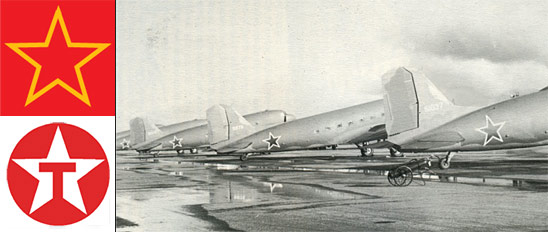
In Molehunt by David Wise, I found a story my father had told me: when World War II broke out, my father and other Americans who spoke Russian were sent by the U.S. Army to Alaska to interpret for Soviet pilots (our Allies at the time), who were ferrying twelve thousand American “lend lease” airplanes to fly in the war. The U.S. Army refitted the American planes with huge Soviet red star decals on both sides of the fuselage. Half way through the war, the army ran out of the Soviet red stars. A U.S. officer improvised by going to the local Texaco station and asking for Texaco Star decals: huge white stars within a red circle. They applied the Texaco decals to the planes and, using the white stars as a template, painted them red. Upon close examination, you could see the edges of the white stars showing through the red paint, but the Soviet pilots “flew Texaco” with no complaint.
Match No. 2
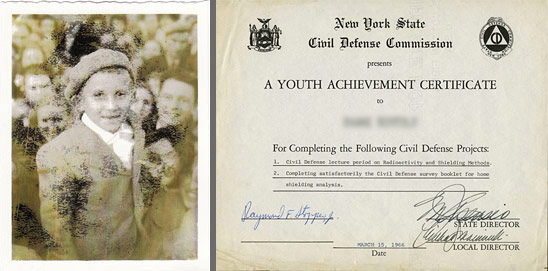
Two childhood Cold War mementos offered by visitors to the Cold War Room. One visitor grew up in the Soviet Union and the other grew up in the United States.
Left: A visitor to the Cold War Room who grew up in the Soviet Union offered this photograph and the accompanying story.
He remembers visiting the 1959 American Exhibit in Moscow as a seven-year old boy. The exhibit extolled the latest American technology and included a huge, recently invented Polaroid camera. The boy’s parents, seen behind in the photograph, lifted him up to have his snapshot taken. The boy, now a reporter living in New York, knew at that moment that he would emigrate to the United States.
Right: From another visitor: “In 1966 (when I was 12) I was awarded a certificate by the Civil Defense Commission for completing the design of a fallout shelter. I have only a foggy memory of the shelter itself — I recall drawing a plan for shelves that would hold canned goods and thick underground walls to protect us from radioactive waves. I also recall participating in ‘duck and cover’ drills at school, where we would hide under our desks when an alarm sounded. By 1966, the Cuban Missile Crisis was over so it seems a little late for the fallout shelter project. Perhaps it was triggered by the lingering chill of the Cold War.”
Match No. 3 & 4
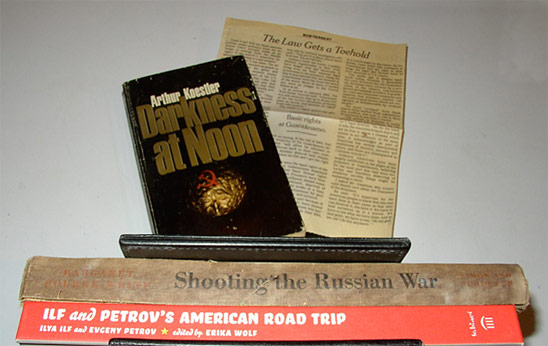
At top: In Arthur Koestler’s Cold War classic Darkness at Noon, which takes place entirely inside the mind of an old Bolshevik in solitary confinement during Stalin’s purges in the 1930’s, the prisoner’s interrogation, trial and sentence portray a terrifying picture of a person caught in a system without legal recourse. In a 2007 New York Times article “Soviet-style ‘Torture’ Becomes ‘Interrogation,’” I read about abuse of prisoners by the U.S. military at Guantanamo Bay using methods borrowed from Soviet torture manuals (also described in Bob Herbert‘s 2006 column “The Law Gets a Toehold.”)
At bottom: In the years leading up to the Cold War, American photographer Margaret Bourke-White traveled to the Soviet Union and documented the photographs she took there in her book, Shooting the Russian War. A few years earlier (1930’s) the Soviet writers, Ilf and Petrov, traveled to the United States, rented a car and drove across the country, documenting their trip with photographs that were never published in their lifetimes. When they returned to the U.S.S.R., they were allowed to publish their journals, but not their photographs. The photographs and journals were recently published by Cabinet magazine in the book Ilf and Petrov‘s American Road Trip. The photographs in the two books bear a striking similarity.
Match No. 5
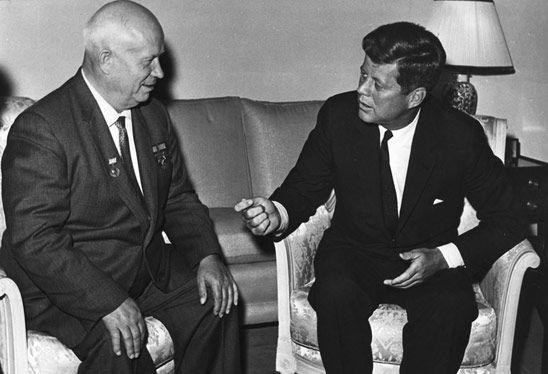
History has shown that the resolution of the Cuban Missile crisis was more symmetrical than initially thought. Though Americans are educated to think of President Kennedy as the level-headed leader who single-handedly saved us from nuclear oblivion, it is understood today, and described in recent books on the subject, that Khrushchev and Kennedy worked together as a team, maneuvering the world away from nuclear disaster by secretly agreeing to conditions that were never revealed to the public.
Match No. 6
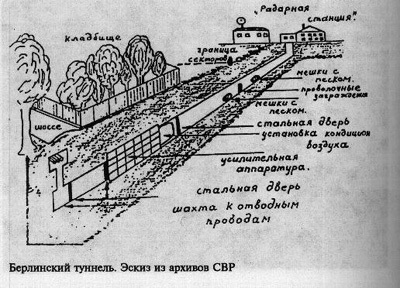
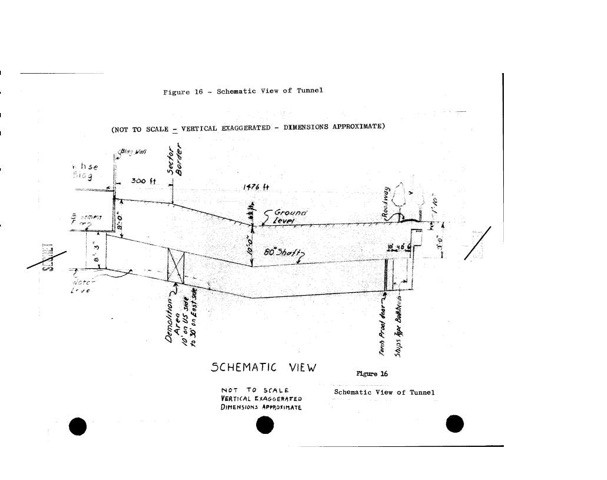
Two schematic images, one created by the KGB and the other by the CIA, of a Cold War tunnel dug by the CIA from West to East Berlin in the 1950’s. This symmetrical Cold War episode evokes the simultaneous sense of connection and disconnection that was pervasive throughout the Cold War.
In 1954 the CIA began to dig a tunnel from West Berlin to East Berlin for the purposes of tapping into Soviet phone cables. The completed tunnel took a year to construct and was 1,476 feet long. 3,100 tons of soil was removed and the tunnel was lined with 125 tons of steel. The KGB, however, had been informed of the project from the start by a Soviet mole in the British Secret Intelligence Service (MI-6) named George Blake. Most likely the KGB did not reveal that they knew about the tunnel to protect their mole. In April 1956 the KGB “discovered” the tunnel and released the information to the world press. American newspapers generally marveled that the CIA was capable of such a remarkable clandestine maneuver.
A detailed description of the tunnel, a declassified, redacted CIA document, can be found on the web by googling Berlin Tunnel.
In 2012, Museum of Matches invited a collaborative group of artists to respond to this document, resulting in the Berlin Tunnel Project, a month-long installation created in collaboration with artists Tatiana Istomina and Barbara Westermann.
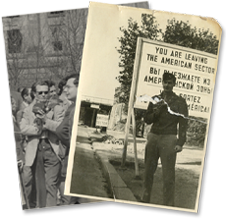
Comments are closed, but trackbacks and pingbacks are open.